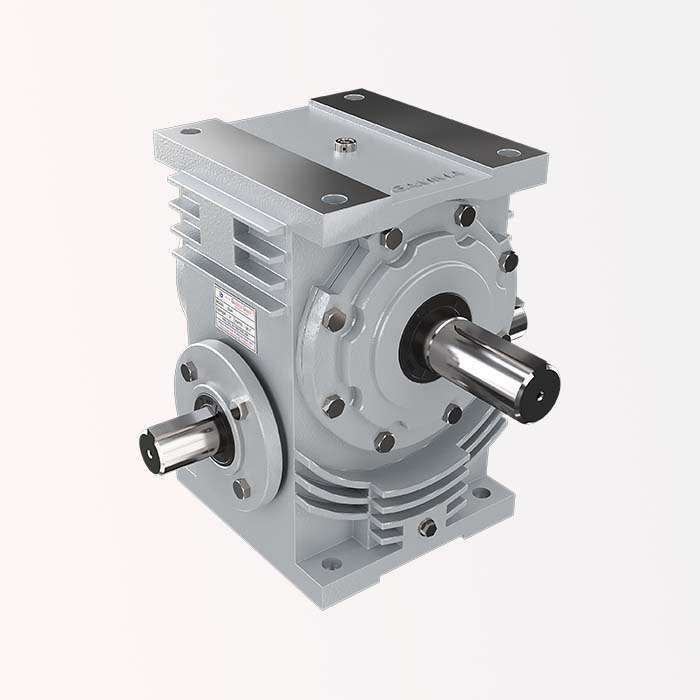Advantages Of Worm Reduction Gearbox
Some of the key advantages of worm reduction gearboxes:
High Torque Output
One of the principal advantages of worm reduction gearbox is their ability to deliver high torque output. The gear ratio in a worm gearbox can be accustomed to achieve major speed reduction, while simultaneously increasing the torque transmitted to the driven load. The high torque is achieved through the exceptional arrangement of the worm and worm wheel.

Condensed and Space-Saving Design
Worm reduction gearboxes are known for their compactness. The small footprint makes them ideal for applications where space is restricted, such as in confined machinery or automated systems. Their compact design also makes it easier to integrate them into machinery with constrained space requirements, deprived of sacrificing performance.
Self-Locking Feature
One of the greatest prominent features of worm reduction gearboxes is their self-locking competence. This means that when the worm gear is not in motion, the worm wheel cannot rotate by itself. In other words, the gearbox stops back driving, which is the opposite rotation of the output shaft due to external forces acting on the system
Smooth and Noiseless Operation
Worm reduction gearboxes operate smoothly and silently due to the nature of the interlocking between the worm and worm wheel. Unlike spur gears, which can produce more noise and vibrations due to their direct tooth-to-tooth contact, the helical shape of the worm provides a steady arrangement, reducing friction and diminishing noise.
Well-organized Power Transmission
Even though worm gears are not as effective as other gear systems, they still provide a relatively high level of power transmission efficiency, particularly at low to moderate reduction ratios. The efficiency of a worm reduction gearbox is influenced by factors such as the material used, lubrication, and the number of threads on the worm. The worm reduction gearbox’s capability to handle high loads and deliver smooth process outweighs its slight energy loss.
Resourcefulness in Applications
Worm reduction gearboxes are versatile and can be used in a variety of applications across different industries. They are normally found in material handling systems like conveyors, automated doors, and lifts, as well as in lifting and hoisting equipment such as cranes and winches.
Low Maintenance Requirements
Worm reduction gearboxes commonly require minimal maintenance compared to other types of gears. With proper lubrication, the gear system’s components experience less wear and tear, foremost to a longer operational lifecycle. Worm gears are self-contained systems that are characteristically sealed, reducing the need for regular servicing.
Resilience and Permanence
Worm reduction gearboxes are built to last. Their simple design and robust construction make them capable of handling high stresses and operating under challenging situations. When designed with superior materials and proper lubrication, worm gears can resist high temperatures, hefty loads, and harsh environments, resulting in increased durability and longevity.
Prevention of Backlash
Worm gears are recognized for their capacity to minimize backlash, or the slight movement that transpires when the gears change direction. The design of the worm and worm wheel allows for tighter engagement, reducing the risk of backlash compared to other gear types.
High Reduction Ratios
Worm reduction gearboxes can accomplish very high reduction ratios in a single stage. This means that a comparatively small gearbox can reduce the speed of a motor significantly while cumulative torque. This is predominantly useful in applications where a drastic reduction in speed is essential.
